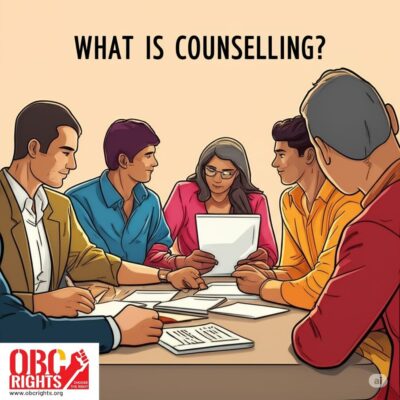India’s reservation system has historically aimed to uplift communities that faced deep-rooted social and educational disadvantages, especially Scheduled Castes (SCs), Scheduled Tribes (STs), and Other Backward Classes (OBCs). But in 2019, a new type of reservation was introduced for the Economically Weaker Sections (EWS), triggering debates and legal scrutiny. Let’s explore what the EWS Reservation quota is and why it has been so controversial.
Two Commissions, Two Perspectives:
To understand how the EWS quota came into existence, we must look at two important government bodies:
1. Mandal Commission (1979):
Created to assess the social and educational status of backward classes, this commission conducted in-depth research at the grassroots level, speaking to citizens across 405 districts, collecting surveys, and gathering public input. Its 1980 report recommended 27% reservation for OBCs in education and public employment. This was implemented in 1992, supported by constitutional provisions (Articles 15(4) and 16(4)) meant to ensure social justice.
2. Major Sinho Commission (2006):
This commission had a different focus — studying economic poverty among the General (upper-caste) category. Instead of broad public outreach, it mainly relied on expert inputs and official data. It suggested non-reservational support like education, skill training, and health programs for the economically poor. Unlike the Mandal Commission, it didn’t strongly recommend quotas.
The Introduction of EWS Quota
In 2019, through the 103rd Constitutional Amendment, the government implemented a 10% reservation for EWS candidates in public employment and higher education. This quota applies only to those not covered under SC, ST, or OBC categories, with a family income below ₹8 lakhs annually. In short it paved the way for reservations to all communities.
The government cited the Sinho Commission’s findings to support this move. However, critics argue that the government misinterpreted the quota — the Commission never fully endorsed reservations and didn’t conduct field research like the Mandal Commission.
Why the EWS Quota Is Controversial
1. Shift from Social to Economic Criteria:
Originally, reservations were intended to uplift communities facing caste-based discrimination and social exclusion. The EWS quota shifts this goal, giving reservation purely on economic grounds, regardless of social disadvantage. Many argue this dilutes the purpose of affirmative action.
2. The ₹1 Income Gap Issue:
If an OBC candidate earns ₹8,00,001, they lose their reservation rights. But a General category person earning ₹7,99,999 can claim EWS benefits. This narrow difference raises concerns about the fairness and practicality of the income limit.
3. Breach of the 50% Cap:
In the landmark Indra Sawhney case, the Supreme Court ruled that total reservations should not exceed 50%. The EWS quota pushes the overall reservation above this cap — raising legal and constitutional red flags.

Supreme Court’s Verdict
In November 2022, the Supreme Court upheld the EWS quota in a 3:2 split decision. The majority upheld the 103rd Amendment, stating that economic hardship should also be acknowledged. However, two judges dissented, saying reservations should still be tied to social and educational backwardness, not just poverty. They also pointed to weak data and violation of the 50% ceiling.
Legal Opposition
Groups like the Society for the Rights of Backward Communities (OBC Rights) challenged the quota, saying it harms the principle of equality. But both the main case and a later the review petition of SFRBC in the Supreme Court were set aside / rejected.
Conclusion
The EWS quota has changed how reservations work in India. It challenges old ideas about fairness, caste-based help, and what the Constitution says about supporting the socially and educationally Backward.
One thing is clear — the fight to make the system fair for all should be relentless, never-ending.



